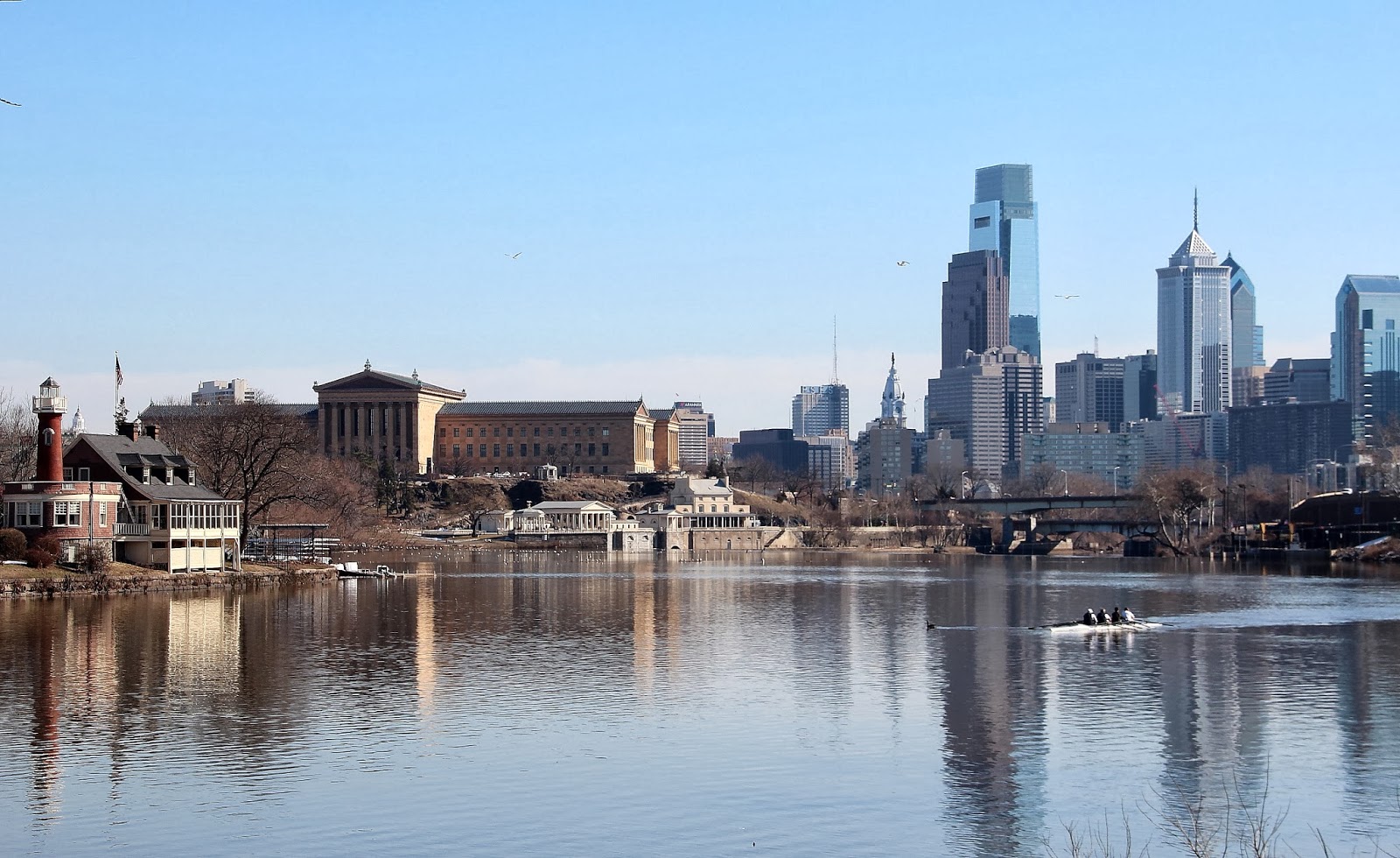The Schuylkill River (a bit of a redundancy, since the Dutch word Schuylkill means "hidden river," a name stemming from the fact the mouth of the river at the receiving stream [i.e., the Delaware River] was obscured by dense reed beds) forms the western edge of central Philadelphia. The river flows within a large urban park created in the 19th century to protect water quality in a river that served as the source of the city's drinking water. Today, roads parallel the river along both sides, but between the roads and the river runs a paved recreational trail that is very popular with walkers, runners, skaters, and bicyclists. Because it was paved and had been plowed, the trail was clear and mostly dry, so Kali and I decided to walk from the north end on the western bank toward central Philadelphia, cross the river, walk back along eastern bank, and then cross the river again to our car - a total distance of 8 miles.
The image at the head of the post shows our approach to the southern end of the walk, nearing central Philadelphia. The skyscrapers of Center City are at the right. The large neo-Classical building on the left is the Philadelphia Museum of Art. In the left foreground, along the river, are the clubhouses of the rowing clubs that use this stretch of the river for competitive training; this cluster of eccentric buildings is known as "Boathouse Row." One of the clubs' teams is on the river in the right of the image.
 |
| Kali along the Schuylkill River esplanade |
 |
| Fairmount Water Works and the Museum of Art |
 |
| View northward across the top of the Water Works to Boathouse Row |
 |
| The recreation path in front of Boathouse Row |
 |
| Looking Westward |
 |
| Promontory Rock rock |
Our 8-mile hike took us 2 hours and 23 minutes, including stops for images. We ate lunch as we walked.

















